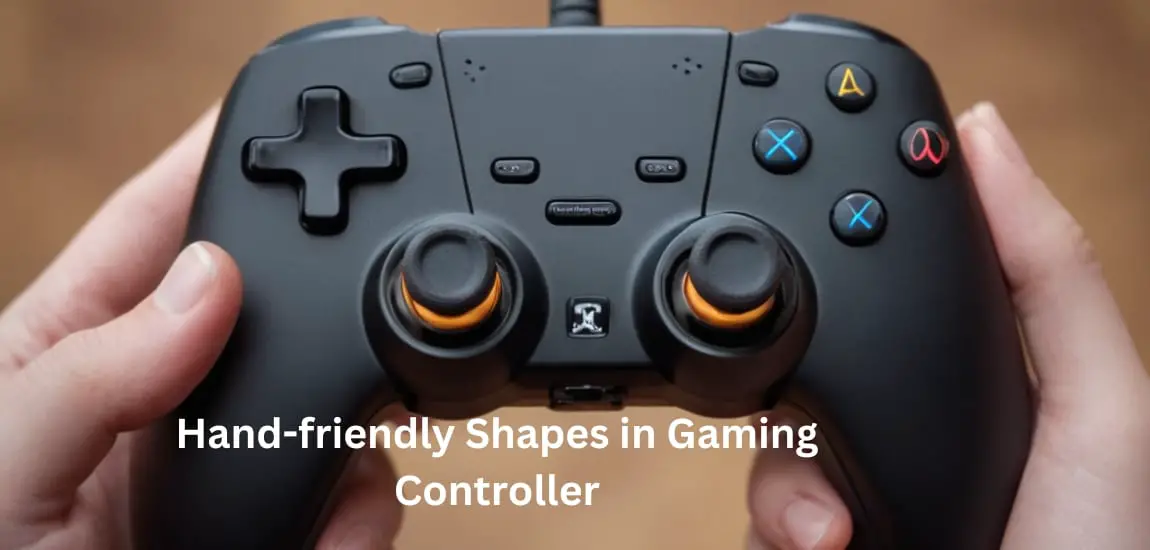The Importance of Hand-friendly Shapes in Gaming Controller
The shape and design of gaming controllers play a crucial role in providing a comfortable and ergonomic gaming experience. With gamers spending hours gripping controllers, these devices’ hand-friendliness can significantly impact gameplay performance, fatigue, and even injury risk. An appropriately Hand-friendly gaming Controller tailored to your hand size and grip style should be a key consideration alongside factors like button layout and features.
Key Takeaways About Hand-friendly Gaming Controller
- Selecting a controller optimized for your hand size and grip style enhances comfort and control while avoiding injury.
- Contoured shapes, modular designs, and supportive accessories provide ergonomic advantages over generic gamepads.
- Adjusting your controller with padding and grip accessories can offer incremental comfort benefits.
- Listening to warning signs of hand and wrist pain signals a need for ergonomic intervention through equipment or technique changes.
Key Ergonomic Considerations Hand-friendly Gaming Controller
Hand anthropometrics
The size and proportions of your hands can determine how comfortable a given controller shape feels. Those with smaller hands may prefer compact grips like those on PlayStation controllers, while larger hands need ample surface area to avoid cramping. Identifying your hand measurements can help narrow suitable options.
Grip style
Gamers use different grip techniques, including palm grip with the entire hand in contact or claw grip with fingers arched for button access. The ideal shape accommodates your favored style without strain. Controllers with removable inserts allow customization for various grips.
Weight
Excess controller weight strains muscles during extended gaming sessions. Lightweight designs around 200 grams maintain maneuverability without taxing the hands. Heavier controllers can cause fatigue or even injury over time.
Texture
The finish and materials along the gripping surface impact traction and moisture absorption. Textured rubber grips provide friction to avoid slipping, while grooved plastic may become slick with sweat. Seek grippy, breathable textures tailored to your climate.
Design Elements for Improved Ergonomics
Contours
Contoured shapes with indented curves and angled surfaces guide hand and finger placement. They allow a natural grasp aligned with the hand’s relaxed form rather than forcing an unnatural posture.
Adjustable layouts
Modular controllers with customizable thumbstick and button locations accommodate various hand proportions and preferred playstyles. Gamers can optimize the layout to reduce uncomfortable stretching or strain.
Supportive wrist rest
A fixed or detachable wrist rest pads the vulnerable joint from excess flexion and pressure. This alleviates postural stress to avoid painful inflammation of tendons and nerves during lengthy gaming.
Key Differences Between Hand friendly Gaming Controller Brands
The primary console makers take distinct approaches to their controller designs, yielding perceptible ergonomic differences:
- PlayStation: Compact overall footprint with slight contouring and a traditional parallel stick layout.
- Xbox: Larger shape with offset thumbstick placement to accommodate hand size diversity and natural thumb orientation.
- Nintendo Switch: Unique adjustable design with detachable wrist straps and side rails for modular grip styles.
While personal preference plays a role, analyzing these distinctions in light of your hand measurements and gaming habits allows an informed selection.
Specialized Alternatives for Enhanced Comfort
Gamers with hand pain or injuries may benefit from specialized controller alternatives:
- Split designs are separated into two halves for shoulder width adjustment and reduced ulnar deviation.
- Orthopedic models offer precise customization, including remappable buttons and switches optimized for limited mobility.
- Supportive accessories like padded gloves or finger splints prevent overextension and relieve pressure.
An occupational therapist can provide personalized advice on ergonomic accessories for enhanced comfort and accessibility.
Tips for Improving Existing Controller Comfort
If replacing your controller isn’t feasible, minor adjustments can still optimize fit:
- Add padding on the grips using tape, silicone sleeves, or anti-slip tennis grip tape to reduce muscle strain.
- Avoid overextending thumbs and fingers to press buttons by adjusting your grip technique instead.
- Take frequent breaks to stretch hands and wrists to avoid cramping or nerve compression from sustained static postures.
Conclusion About Hand-Friendly Gaming Controller
The intensive nature of modern gaming places substantial physical demands on players’ hands over time. Prioritizing ergonomic design factors in controller selection modifies these demands to avoid pain and injury pitfalls. Seeking controllers specifically engineered for hand health and stamina can thus provide a competitive edge and longevity to enthusiasts and professionals alike. Just as elite athletes fine-tune their equipment to complement their bodies’ strengths, informed controller choices enable gamers to maximize comfort and minimize fatigue.
Frequently Asked Questions
Should I choose an Xbox or PlayStation controller for small hands?
For smaller hands, the compact size of PlayStation controllers usually provides a more comfortable fit. Their closer button spacing also requires less thumb movement.
What’s the most ergonomic way to hold a Nintendo Switch?
A Switch Pro controller provides more ergonomic grip options than the integrated Joy-Cons. For tabletop mode, avoid hunching over with unsupported wrists.
Can controllers cause long-term injury?
Repeated stress on muscles and nerves from awkward postures can prompt inflammatory conditions like tendinitis. Weight-bearing pressure can also irritate nerves and joints over time.
How do I know when controller use is hurting my hands?
Signs like soreness, cramping, tingling, or reduced grip strength after gaming sessions signal ergonomic intervention is needed through equipment changes, technique modification, or rest.
Last Updated on 3 March 2024 by Ray Imran

Passionate about gaming and technology, the author possesses extensive experience in gaming controller design. With a background in user experience and human-computer interaction, they have contributed to research and hands-on projects aimed at enhancing the functionality and accessibility of gaming controllers.








